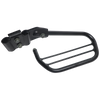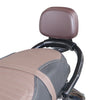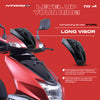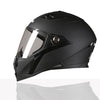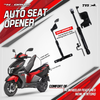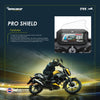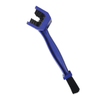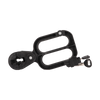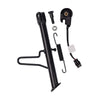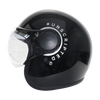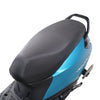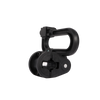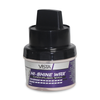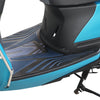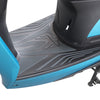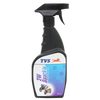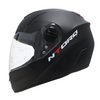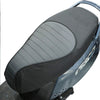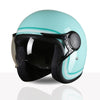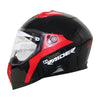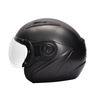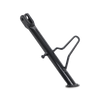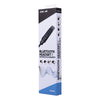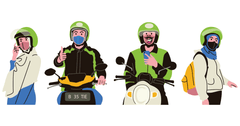Understanding Motorcycle ABS and Why It Matters
Riding a motorcycle is more than transportation—it’s a rhythm, a language of freedom that riders across the world understand. But there’s something about motorcycles we often overlook: unlike cars, where you’re surrounded by metal and airbags, on a bike you’re exposed. Every turn of the handle, every squeeze of the lever carries direct consequences. And in that delicate balance, braking is king.
If acceleration gives you the thrill, braking decides your fate. Riders often obsess about horsepower, torque, or top speeds, but ask any seasoned motorcyclist and they’ll tell you—what truly saves you on unpredictable roads is how quickly and safely you can stop.
That’s where ABS—Anti-lock Braking System—steps in. Think of it as your motorcycle’s silent guardian. You may never notice it when everything goes smoothly, but in a split second—when a dog runs across the road, when a car cuts into your lane, when rain turns asphalt into glass—ABS quietly ensures you don’t lose control. It doesn’t ride for you, but it rides with you, making sure that panic doesn’t translate into disaster.
What Is ABS in Motorcycles?

At its core, ABS is simple: it’s a system that prevents your motorcycle wheels from locking up during braking. But simplicity here masks brilliance.
The antilock braking system definition: a safety system that automatically controls brake pressure to prevent wheel lock-up and maintain traction during emergency braking.
Sounds technical? Let’s put it another way. When you slam your brakes hard, there’s always a risk that your wheels will stop spinning while the motorcycle is still moving forward. That’s wheel lock-up—and it’s dangerous because once your wheels stop rotating, you lose the ability to steer. ABS solves that problem by “pulsing” the brakes rapidly, letting the wheels keep turning just enough for you to stay in control.
Imagine riding on a wet road. You see a sudden obstacle and squeeze the brakes. Without ABS, your front wheel could freeze, sending you sliding. With ABS, the brakes are applied and released multiple times per second, faster than human reflexes. The result: the wheel slows down but never completely locks. You stop, but you also stay upright.
The Components Behind the Magic

ABS might feel like wizardry, but it’s built on real-world parts:
- Wheel Speed Sensors – Mounted on each wheel, these sensors constantly measure how fast the wheels are spinning.
-
Electronic Brake Control Module (EBCM) – Also known as the anti lock brake control module, this is the “brain” of the operation. It processes signals from the sensors and makes instant decisions.
-
Hydraulic Valves – These valves follow the module’s commands, adjusting brake pressure on the fly.
- Brake Lines and Actuators – Deliver the precise pressure required at the wheels.
In short, ABS isn’t just one part—it’s a conversation between sensors, valves, and the control module, all working in harmony to keep you safe.
How Does ABS Work?
So, how does ABS work in real life? Let’s break it down step by step.
-
Normal Braking – You pull the lever or press the pedal. The brake pads press against the disc, slowing the wheel.
-
Wheel Speed Monitoring – The sensors check if either wheel is about to lock (spinning too slowly compared to the bike’s movement).
-
Signal Processing – This data rushes to the electronic brake control module, which calculates in milliseconds whether intervention is needed.
-
Brake Pressure Adjustment – If the wheel is close to locking, the anti lock brake control module commands the valves to release and reapply brake pressure in tiny, rapid bursts.
- Controlled Stop – The wheel slows but never fully locks, giving you stability and steering control.
Think of it as the difference between slamming a door shut versus gently tapping it multiple times until it’s closed. The end goal—stopping—is the same, but the method is controlled and safe.
ABS in Action: Real-World Scenarios
-
Wet Roads: You’re riding in the rain. A bus cuts across suddenly. With ABS, your wheels don’t skid, and you can steer around danger.
-
Loose Gravel: You hit a patch of gravel on a curve. Non-ABS bikes often wash out here. ABS adjusts brake force instantly, giving you traction back.
- Panic Stops: A car door flings open in traffic. Without ABS, you’d lock up. With ABS, you stop in time while staying balanced.
The magic lies not in stopping you faster (though often it does), but in stopping you safer.
Why ABS Matters for Riders
Knowing what is ABS and how does ABS work is only half the story. The real impact lies in how it changes your riding experience. Here’s why ABS truly matters.
-
Prevents Wheel Lock-Up
This is the headline act. The moment you brake hard, the system ensures the wheels don’t lock. The electronic brake control module works invisibly, but its effect is massive—you remain in control. -
Stability on Slippery Roads
ABS shines in tricky conditions: rain, gravel, oil patches, even sudden downhill stops. By keeping traction alive, it prevents skids and slides.
-
Confidence Booster
Ask any rider: fear of skidding can make you hesitate in emergencies. With ABS, you trust your bike to help. That confidence alone makes you a better, calmer rider.
-
Reduces Accident Severity
Studies worldwide show that ABS-equipped motorcycles have fewer and less severe crashes. For governments, this is why ABS is being made mandatory. For riders, it’s peace of mind.
-
Perfect for Beginners and Veterans Alike
Beginners: They often panic-brake. ABS forgives those errors.
Veterans: Even pros misjudge road grip sometimes. ABS is a safety net, not a crutch.
ABS doesn’t replace skill. It complements it.
ABS vs Non-ABS Motorcycles: Key Differences
To appreciate ABS fully, let’s compare it with non-ABS braking.
1. Stopping Distance
-
Non-ABS: Stopping distance increases if the bike skids.
- ABS: Often shorter, because the bike maintains grip.
2. Stability
- Non-ABS: High chance of losing balance on wet or uneven roads.
- ABS: Rider remains stable, upright, and steerable.
3. Safety Regulations
In many countries, motorcycles above 125cc must have ABS by law. Why? Because data proved it reduces crash risks significantly.
4. Rider Experience
Non-ABS demands perfect braking finesse—something even experienced riders struggle with in emergencies. ABS forgives imperfect reactions, making riding safer for everyone.
In short: once you experience ABS, going back to non-ABS feels like riding without a helmet—it’s possible, but why risk it?
The Future of ABS and Motorcycle Safety
ABS is not the end—it’s the beginning of smarter safety. Modern bikes now feature:
-
Cornering ABS: Adjusts braking even while leaning in a turn.
-
Linked Braking Systems: Distributes brake force automatically between front and rear.
- Traction Control Integration: Works with ABS for maximum grip.
Tomorrow’s motorcycles will only get smarter. But ABS remains the foundation, the starting point of safer motorcycling.
Conclusion – A Step Towards Safer Roads
Motorcycling is more than just riding from one place to another—it’s a lifestyle, an identity, and for many, pure therapy on two wheels. But with that passion comes responsibility, and safety isn’t a limitation; it’s the enabler that lets you keep enjoying every ride. That’s the gift ABS brings to the table.
The Anti-lock Braking System isn’t a gadget or a gimmick. It’s a commitment to riders everywhere—a promise that when the road tests you with the unexpected, your motorcycle will stand by you. Whether you’re threading through city traffic, gliding on highways, or leaning into mountain curves, ABS gives you the confidence that one mistake won’t cost you everything.
And maybe that’s the real beauty of it: ABS doesn’t change the thrill of riding, it preserves it. It ensures that freedom on the open road isn’t shadowed by fear, but balanced with control.
So, the next time you squeeze your brakes, remember—safety doesn’t kill the joy of riding. It’s what allows the joy to last, ride after ride, mile after mile.
